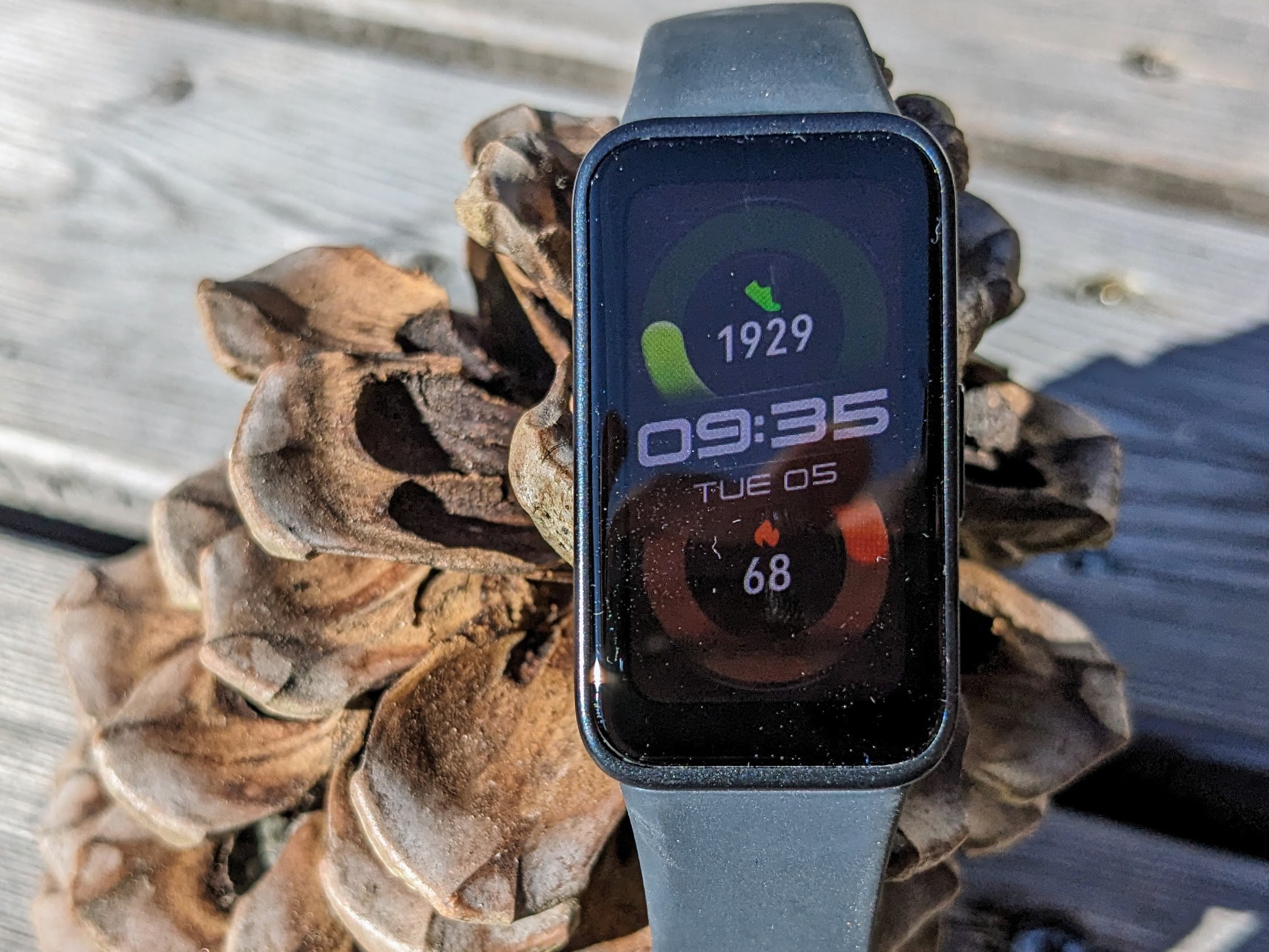
You can set the tracker’s settings on the device itself and in part via the smartphone app. The app offers the option to adjust your health monitoring. You can activate and deactivate individual settings such as the measurement of stress, blood oxygen, heart rate and sleep. Furthermore, you can use your smartphone to set which apps are allowed to send notifications to the tracker. You can also change the watch face through your phone.
The options are much more extensive on the Band 8 itself. There, you can adjust the display brightness, always-on display, vibration, tile layout and much more. You can set timeframes for do-not-disturb or sleep modes.
The Band 8 can be operated via the touchscreen and the button on the side. If you swipe from bottom to top, it opens the notification menu. Swiping from top to bottom opens a short menu where you can access the alarm clock, flashlight, display settings and more. Swiping from left to right opens a slimmed-down version of Huawei Assist Today, and you can see the weather and media playback.
Swiping from right to left takes you through cards which display infos about the individual sections. Ex works, it shows your heart rate, blood oxygen, sleep analysis and an activity overview. Clicking on a card takes you to a sub-menu with further information. You can set the order and contents of these cards via the tracker.
Pressing the button takes you to an app overview which displays all the programs. The Band 8 doesn’t have an app store. It also doesn’t support NFC. Even so, the tracker comes with two payment services pre-installed – Alipay and Weixin Pay. If you are on a different menu or program, pressing the side button always takes you back to the watch face.
Source link
 notebook.co.id informasi dan review notebook laptop tablet dan pc
notebook.co.id informasi dan review notebook laptop tablet dan pc